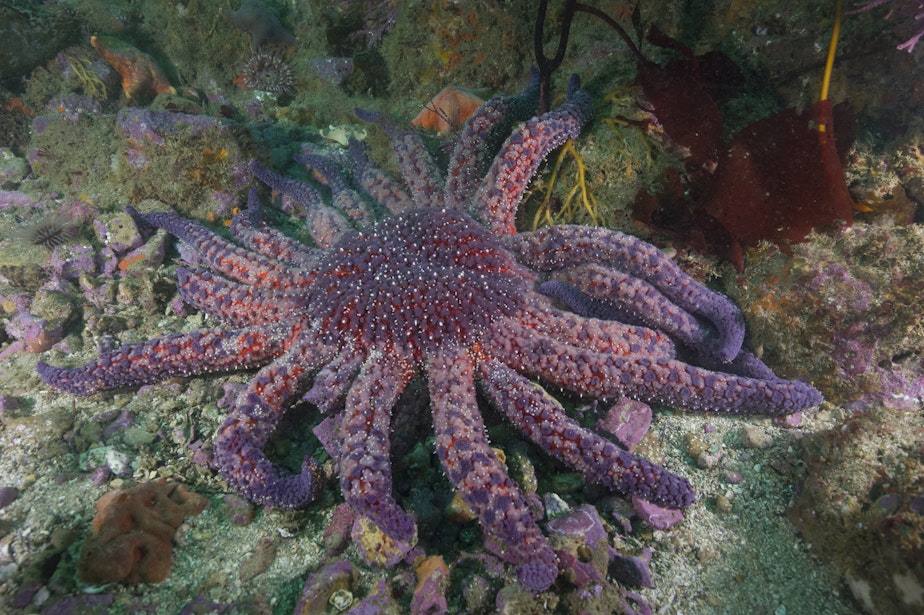Pizza-sized predators to get federal protection

The world’s fastest sea star could get a little boost from the U.S. government.
The National Oceanic and Atmospheric Administration has proposed listing the sunflower star as a threatened species, which could lead federal agencies to block projects that would harm its habitats and unlock funding for research on how to save the species.
The pizza-sized predator with up to two dozen arms has been unable to outrun the world’s worst underwater pandemic.
A wasting disease has turned 20 species of sea stars into goo from Alaska to Mexico. None has been hit harder than the sunflower star, a once-dominant predator on Pacific Coast seafloors and in kelp forests.
“Sea star wasting syndrome” — scientists’ placeholder name for what remains a mystery illness — has killed 5 billion sunflower stars, or 90% of their global population, over the past decade.
From the Olympic Peninsula to Baja, 98% of sunflower stars have died. In the inland Salish Sea of Washingon and British Columbia, 92% have died.
Sponsored
“At this point, there is essentially no smoking gun. There is not a specific pathogen that's been identified yet,” said marine biologist Dayv Lowry with the National Marine Fisheries Service.
RELATED: Scientists race to rescue world’s fastest sea star from oblivion
An international panel of scientists declared the sunflower star “critically endangered” in 2020.
The activist Center for Biological Diversity petitioned the government in 2021 to list the sunflower star as threatened or endangered. The group expects a listing would help reduce threats from water pollution, dredging, shoreline armoring, and other coastal development projects that might push the sunflower stars closer to extinction.
“If you can make sure that its habitat is well protected and that it's not having to deal with pollution that can make it more vulnerable to disease, those things can help the sea star become more resilient in the face of disease,” said Center for Biological Diversity attorney Miyoko Sakashita in Oakland, California.
Sponsored
The cause of the wasting disease is still unknown, a decade after divers in Vancouver Harbour and Howe Sound near Vancouver, British Columbia, first noticed the pizza-sized sea stars melting away and dying in large numbers.
The sunflower star is the first sea star to be considered for protection under the Endangered Species Act.
The National Oceanic and Atmospheric Administration is taking public comment for 60 days and plans to make a final decision within a year.




